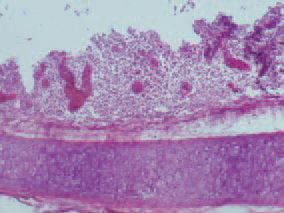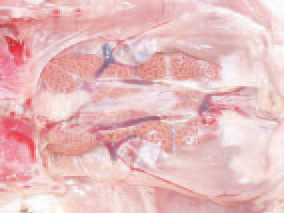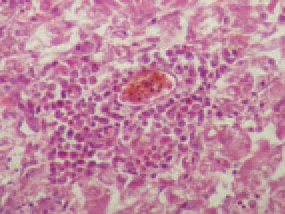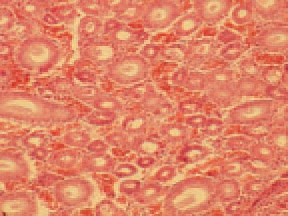|
Diseases of Poultry
By Ivan Dinev, DVM, PhD
|
INFECTIOUS BRONCHITIS (IB)

226.In chickens up to the age of 4 weeks, IB is manifested by severe respiratory signs (sneezing, coughing, and rales). Rhinites and conjunctivites, depression and crowding around heat sources are observed. The death rate could reach 100%. The mortality in young chickens is usually insignificant provided that a secondary infection with a different agent is not occurring. In such cases, there is a moderate to severe inflammatory cell infiltration of upper respiratory tract mucosa, resulting In thickened and more compact mucosa.


227.228.In layer hens infected with the IB virus, oophorites and dystrophic necrobiotic lesions affecting primarily the middle and the last thirds of oviduct's mucous coat are observed. The consequences are drop in egg production, appearance and increase in the number of de-formed and pigmentless eggs or eggs with soft shells and watery egg white.



229.230.231.The nephrotropic strains of the IB virus cause severe inflammatory and dystrophic necrobiotic damages of kidneys: urolithiasis (229), interstitial nephritis (230), haemorrhages (231) that considerably increase the death rate. Under natural conditions, only hens are infected. Non-immune birds of all ages are susceptible. The disease is even seen in vaccinated flocks. The serological methods (VN, ELISA etc.) are widely used in the diagnostics. At present, PCR is used for rapid identification of IB virus serotypes. IB should be distinguished from other acute respiratory disease as ND, laryngotracheitis and infectious coryza. The vaccination with live or killed vaccines is effective only if they contain the respective serotype of the virus for the given region.






